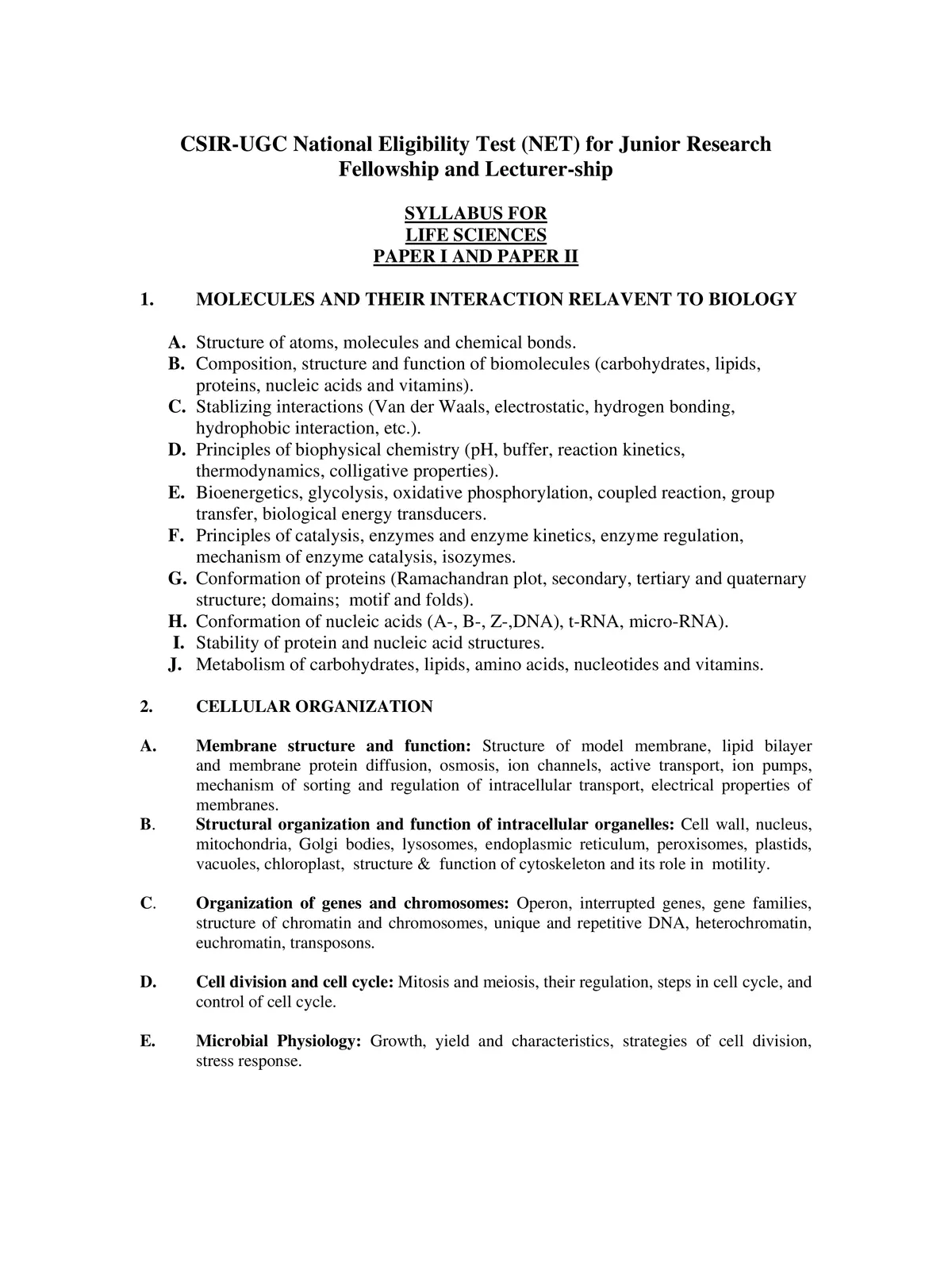CSIR NET Syllabus Life Science 2022 - Summary
The National Testing Agency conducts the CSIR UGC NET Exam in five science stream subjects, i.e., Physical Sciences, Chemical Sciences, Mathematical Sciences, Life Sciences, and Earth Sciences. The exam paper is divided into two parts, i.e., General Aptitude and the subject you opt for. Below you can check the complete CSIR UGC NET Syllabus for all the subjects, including the General Aptitude section.
CSIR NET Life Science syllabus PDF contains a list of topics mainly from Biology and Ecology. The topics such as Cell Organization, System Physiology of Plant and animals, Applied Biology, Ecological Principles, etc are included in this section. It is important to have complete information to put entire focus and effort into the CSIR UGC NETpreparation. Here in this blog, we have covered all the necessary details of the CSIR NET Syllabus 2022 & Exam Pattern for all five subjects.
CSIR NET Syllabus Life Science 2022 – Overview
CSIR NET Life Science Syllabus
| Name of the Exam | CSIR NET |
| Conducting Body | National Testing Agency (NTA) |
| Purpose of Exam | Junior Research Fellowship (JRF) and Lectureship (LR) |
| Mode of Examination | Computer Based Test (CBT) |
| Number of Subjects | Five |
| Exam Sections | Three Parts – Part A, Part B, and Part C |
| Duration of Exam | 3 Hours |
| Medium of Exam | English and Hindi |
| Maximum Marks | 200 |
| Negative Marking | Marks were deducted for every wrong answer |
| Official Website | csirnet.nta.nic.in |
| CSIR NET Syllabus – General Aptitude | |
|---|---|
| Numerical Ability | Number and Simplification; Average; Quadratic Equations; Sequence and Series; Surd and Indices; Logarithms; Percentage; Profit and Loss; Simple Interest & Compound Interest; Partnership; LCM and HCF; Probability; Mensuration. |
| Reasoning | Series Formation; Ranking and Arrangement; Puzzles; Coding-Decoding; Distance and Directions; Calendar and Clock. |
| Data Interpretation, and Graphical Analysis | Mean, Median & Mode; Measures of Dispersion; Graphical Analysis: Bar Graph, Line Graph; Pie-Chart; Tabulation. |
| CSIR NET Syllabus of Life Science | |
| Molecules and their Interaction Relevant to Biology | Structure of atoms, chemical bonds, and molecules. |
| Principles of biophysical chemistry (pH, buffer, thermodynamics, reaction kinetics, colligative properties). | |
| Principles of catalysis, enzymes and enzyme kinetics, enzyme regulation, mechanism of enzyme catalysis, isozymes. | |
| Confirmation of proteins (Ramachandran plot, secondary, tertiary, and quaternary structure; motif and folds; domains). | |
| Stabilizing interactions ( hydrogen bonding, Van der Waals, electrostatic, hydrophobic interaction, etc.). | |
| Bioenergetics, oxidative phosphorylation, glycolysis, coupled reaction, biological energy transducers, group transfer. | |
| Metabolism of carbohydrates, amino acids, lipids, nucleotides, and vitamins. | |
| Conformation of nucleic acids (helix (A, B, Z), micro-RNA, t-RNA). | |
| B Composition, structure, and function of biomolecules (carbohydrates, proteins, lipids, nucleic acids, and vitamins). | |
| Stability of proteins and nucleic acids. | |
| Composition, structure, and function of biomolecules (carbohydrates, nucleic acids, proteins, lipids, and vitamins). | |
| CSIR NET Life Science Syllabus: Cellular Organization | |
| Membrane structure and function | Structure of model membrane, lipid bilayer, and membrane protein diffusion, ion channels, osmosis, active transport, mechanism of sorting and regulation of intracellular transport, ion pumps, electrical properties of membranes. |
| Structural organization and function of the intracellular organelles | Cell wall, nucleus, Golgi bodies, mitochondria, lysosomes, endoplasmic reticulum, plastids, peroxisomes, vacuoles, chloroplast, structure & function of the cytoskeleton, and its role in motility. |
| Organization of genes and chromosomes | Operon, interrupted genes, the structure of chromatin and chromosomes, gene families, unique and repetitive DNA, heterochromatin, transposons, euchromatin. |
| Cell division and cell cycle | Mitosis and meiosis, their regulation, control of cell cycle, and steps in the cell cycle. |
| Microbial Physiology | Growth, yield, characteristics, stress response, strategies of cell division. |
You can download the CSIR NET Syllabus Life Science 2022 PDF using the link given below.
